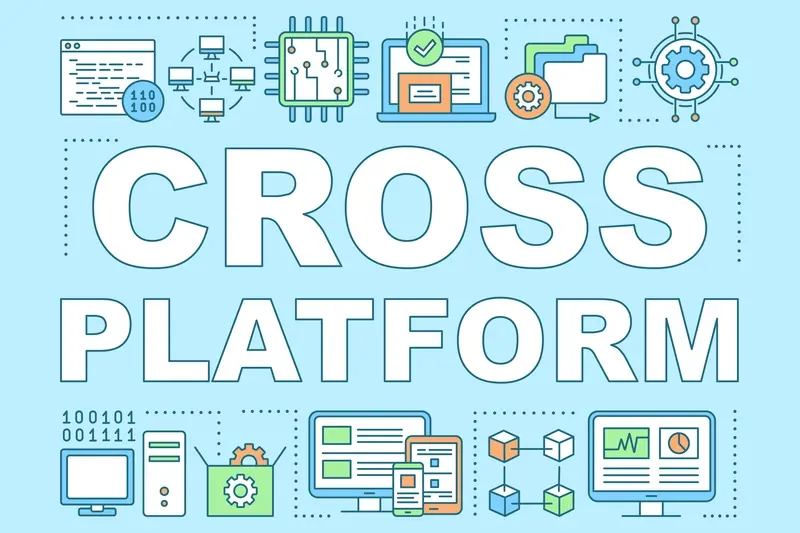What Is Agile Development And Why Does Your App Need It?
Most mobile app projects fail—not because of bad ideas or poor coding, but because teams choose the wrong development methodology. This single decision can make or break your entire project, determining whether you'll launch on time and within budget or watch your app dream crumble into expensive chaos. The methodology you pick shapes everything from how your team communicates to how quickly you can adapt when things go wrong (and they will go wrong!).
When I talk to app owners about their failed projects, the same story emerges time and again. They started with grand plans, detailed specifications, and what seemed like a foolproof timeline. Then reality hit. User feedback demanded changes. Market conditions shifted. New features became urgent priorities. Teams that couldn't adapt quickly found themselves building apps that nobody wanted by the time they launched.
The best mobile app development methodology isn't the one that sounds most impressive—it's the one that helps your team deliver what users actually need, when they need it
This guide will walk you through everything you need to know about Agile development and why it's become the go-to choice for successful mobile app projects. We'll explore how it compares to traditional approaches, break down its core principles, and help you decide if it's right for your project. No jargon, no sales pitches—just practical insights to help you make the best choice for your mobile app.
What Is Agile Development?
Agile development is a way of building software that focuses on creating small pieces of your app quickly, then getting feedback and making improvements. Instead of spending months planning every detail upfront—which often leads to problems down the line—agile teams work in short bursts called "sprints" that usually last 1-4 weeks.
Think of it like building with blocks. Rather than designing the entire structure on paper first, you build a basic version, test if it works, then add more blocks based on what you learn. This approach lets you spot problems early and change direction if needed without wasting time or money.
The Sprint System
Each sprint focuses on delivering working features that users can actually test. At the end of every sprint, the team reviews what they've built, gathers feedback, and plans the next sprint based on what they've learned. This constant cycle of build-test-improve keeps your app moving in the right direction.
Built for Change
What makes agile particularly powerful for mobile apps is that it embraces change rather than fighting it. User needs evolve, market conditions shift, and new technologies emerge—agile development lets your team adapt quickly without derailing the entire project. You're not locked into decisions made months ago that might no longer make sense.
Traditional Development vs Agile Development
Let me tell you about the two main approaches to building mobile apps—and why one of them might be holding your project back. Traditional development (often called waterfall) follows a strict step-by-step process where each phase must be completed before moving to the next. You plan everything upfront, design the entire app, build it completely, then test it at the end. Sounds logical, right?
The problem is mobile apps aren't like building a house where you can predict every requirement from day one. User needs change, new features emerge, and what seemed perfect on paper often falls flat in real life. I've seen too many projects where months of work had to be scrapped because the final product didn't match what users actually wanted.
Agile development takes a completely different approach. Instead of one massive build, you create your app in small chunks called sprints—usually lasting 1-2 weeks. Each sprint produces a working piece of your app that can be tested and improved. This development methodology allows your team to adapt quickly and respond to feedback throughout the entire project management process.
| Traditional Development | Agile Development |
|---|---|
| Fixed requirements upfront | Flexible requirements that evolve |
| Testing happens at the end | Continuous testing throughout |
| Changes are expensive and difficult | Changes are expected and manageable |
| Long development cycles | Short, iterative cycles |
Start with a minimum viable product (MVP) in your first few sprints. This lets you test your core idea with real users before investing in advanced features that might not be needed.
The Core Principles of Agile for Mobile Apps
After years of working with different development approaches, I can tell you that agile isn't just a buzzword—it's built on four solid principles that actually make sense for mobile app projects. These principles were written by developers who got fed up with the old way of doing things, and they work brilliantly for mobile apps.
The first principle puts people and interactions above processes and tools. This means your development team talks to each other instead of hiding behind lengthy documents and rigid procedures. For mobile apps, this is brilliant because you need quick decisions when dealing with different screen sizes, operating systems, and user feedback.
Working Software Takes Priority
The second principle focuses on working software over comprehensive documentation. Don't get me wrong—documentation matters, but having a functioning app that users can actually test beats a 100-page specification document every time. Mobile users are impatient; they want to see and feel your app, not read about it.
Collaboration and Adaptation
Customer collaboration comes before contract negotiation, and responding to change beats following a rigid plan. Mobile apps live in a fast-moving world where user needs shift quickly and new devices appear constantly.
- Individuals and interactions over processes and tools
- Working software over comprehensive documentation
- Customer collaboration over contract negotiation
- Responding to change over following a plan
These principles aren't just theoretical—they're practical guidelines that help mobile app teams build better products faster.
How Agile Development Works in Practice
Right, let's get into the nitty-gritty of how agile development actually works when you're building a mobile app. I've worked with countless teams over the years, and whilst the theory sounds straightforward, the reality can be quite different—but in a good way!
The process starts with something called sprints, which are short bursts of work lasting one to four weeks. Your development team will pick a handful of features to build during each sprint, then work flat out to get them done. At the end of each sprint, you'll have a working piece of your app that you can actually test and use.
Daily Stand-ups and Regular Check-ins
Every day, the team has a quick 15-minute meeting called a stand-up. Everyone shares what they did yesterday, what they're doing today, and if anything's blocking their progress. It keeps everyone on the same page without endless email chains.
The beauty of agile isn't just in the methodology—it's in how it transforms the entire relationship between clients and developers
Between sprints, there's a review meeting where you see what's been built and plan the next sprint. This means you're constantly seeing progress and can change direction if needed. No more waiting months to discover your app isn't what you wanted!
Benefits of Using Agile for Your Mobile App Project
After working with countless app projects over the years, I can tell you that choosing Agile development isn't just a trendy decision—it's a smart one. The benefits are real and they make a genuine difference to how your project turns out.
The biggest advantage? You get to see your app come to life piece by piece. Instead of waiting months to see anything, you'll have working features to test and play with every few weeks. This means you can spot problems early, before they become expensive headaches.
Key Benefits for Your App Project
- Faster time to market with regular releases
- Lower risk of project failure through early testing
- Better quality apps with continuous feedback
- More control over budget and timeline
- Ability to adapt to user feedback quickly
- Improved team communication and collaboration
What I love most about Agile is how it keeps everyone honest. Your development team can't hide behind excuses for months—they need to deliver working features regularly. You get transparency into what's actually happening with your money and timeline.
The flexibility is brilliant too. When users test your app and suggest changes, you can actually implement them without derailing the entire project. That's the kind of responsiveness that collecting feedback from app users makes possible, separating successful apps from the ones that collect digital dust.
Common Challenges with Agile Development
After working with agile development methodology for mobile app projects over the years, I've learned that it's not always smooth sailing. Teams often struggle with the constant communication requirements—daily standups, sprint planning, retrospectives. It sounds simple on paper, but getting everyone to actually participate meaningfully? That's where things get tricky.
The biggest hurdle I see is when clients expect detailed project timelines upfront. Agile works differently; you're building and learning as you go. Some stakeholders find this uncertainty uncomfortable, especially when they're used to traditional project management approaches with fixed deadlines and detailed pricing models.
Team-Related Obstacles
Getting team members to adapt their working style can be challenging. Developers might resist frequent code reviews, designers may struggle with iterative feedback, and project managers often find it hard to let go of rigid control. The collaborative nature of agile requires everyone to be more flexible than they might be comfortable with.
- Communication breakdowns between team members
- Resistance to changing requirements mid-sprint
- Difficulty estimating story points accurately
- Team members working in isolation rather than collaboratively
Start with shorter sprints when transitioning to agile development methodology. Two-week sprints are easier to manage than month-long ones, and your mobile app team will adapt to the rhythm more quickly.
The key is patience and consistent practice. Most teams need several sprints before they find their groove with agile processes. Asking the right questions about code reviews can help ensure quality standards are maintained throughout the agile process.
Choosing the Right Development Methodology for Your App
After eight years of building mobile apps, I can tell you that choosing the right development methodology isn't just about picking what sounds good—it's about what actually works for your specific project. Most of my clients come to me thinking they need to choose between agile and traditional methods, but the reality is more nuanced than that.
Agile works brilliantly for most mobile app projects, particularly when you're not entirely sure what the final product will look like or when user feedback might change your direction. If you're building something completely new or entering a competitive market where you need to adapt quickly, agile is usually your best bet. The iterative approach means you can test ideas early and pivot without wasting months of development time.
When Traditional Methods Make Sense
That said, traditional waterfall development still has its place. If you're building an app with very specific requirements that won't change—think compliance-heavy industries or internal enterprise tools—then a more structured approach might serve you better. The key is being honest about what you actually need rather than what you think you should want.
Making the Right Choice
Consider your budget, timeline, and how much uncertainty exists around your app's features. If you can't clearly define what success looks like or if your target users might surprise you, agile development will give you the flexibility to succeed. This is especially important when turning your app idea into reality for the first time.
Conclusion
After eight years of working with different development approaches, I can honestly say that agile development has transformed how we build mobile apps. It's not just another buzzword—it's a practical way to manage projects that actually works. The flexibility to adapt when things change, the constant feedback from users, and the ability to spot problems early make agile the sensible choice for most mobile app projects.
Does this mean agile is perfect for every single project? Not quite. Some apps with very clear requirements and tight deadlines might benefit from a more traditional approach. But for the majority of mobile apps I've worked on, agile has made the difference between a successful launch and a disappointing one.
The beauty of agile lies in its focus on people and working software over rigid processes. Your development team can respond to feedback quickly, your users get value sooner, and you reduce the risk of building something nobody wants. That's what good project management should do—keep everyone focused on what matters most.
If you're planning a mobile app project, give agile serious consideration. The methodology has proven itself time and again, and the benefits far outweigh the learning curve. Your users will thank you for it.
Share this
Subscribe To Our Learning Centre
You May Also Like
These Related Guides

What Database Should You Pick for Your Mobile Application?

What Is Cross-Platform App Development and Is It Right for Me?



